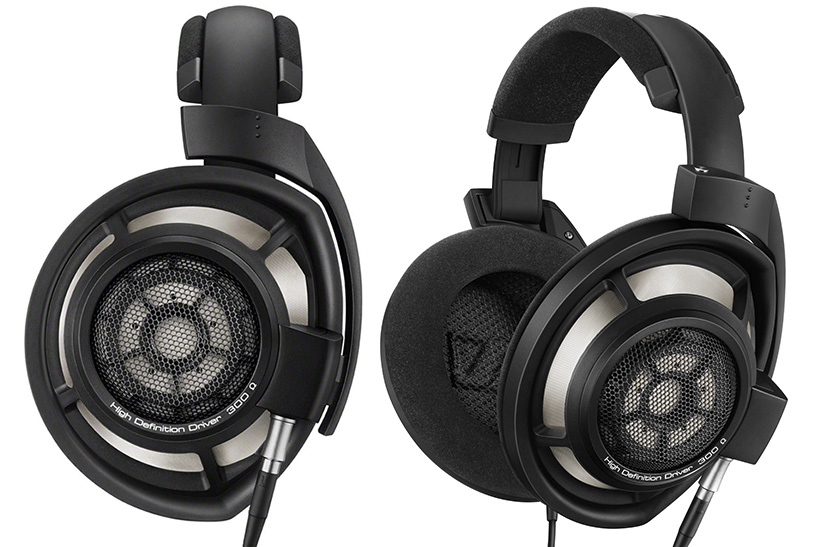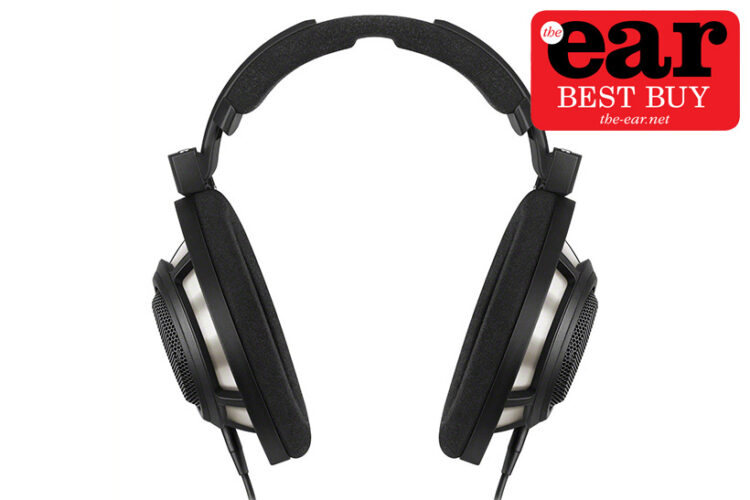The original HD800 sent shockwaves through the burgeoning ranks of headphone enthusiasts when it was launched in 2009 as Sennheiser’s flagship dynamic model. Offering unprecedented sonic clarity and dimensionality at a genuinely accessible price, the HD800 soon achieved cult status and re-affirmed the German specialist as the king of dynamic headphones. This year saw the release of the HD800S, an improved version that is the considered response to critical feedback of the original model’s flavor, which led it to become (almost) as divisive as Brexit!
Dynamic advances
In a fiercely competitive market that has seen competitors favouring the use of expensive planar or electrostatic drivers in their audiophile headphones, Sennheiser has been resolute in pushing the envelope for dynamic drivers; the tried and tested technology originally employed in the HD-414, the world’s first open-back headphone, in 1968. The subsequent timeline of Sennheiser’s flagship models make it patently evident that significant advances have been made over the last 40 plus years. The HD800 provided arguably the greatest advance of all by demonstrating how acoustically transparent and low-distortion a dynamic headphone could be when treated to state-of-the-art implementation.
From the strikingly similar nomenclature and aesthetic design, Sennheiser are keen to convey that the new HD800S is a subtle sonic refinement of the HD800 and not a fundamental redesign. “Improving on a seemingly perfect formula is not a task undertaken lightly, but [our] engineers have succeeded in enhancing still further the sound reproduction in the open, circumaural HD800S.” Is their line, and given the huge popularity of the HD800, Sennheiser’s decision not to (over)-fettle their flagship is a sensible if not courageous one.
The HD800 remains in production with the HD800S now topping the range at £1,200 (£100 dearer than the current HD800). Despite a modest price increase, the HD800S is bundled with a previously optional £250, 4-pin XLR-terminated cable in addition to the standard symmetrical, impedance-matched, low-capacitance quarter inch (6.3mm) jack version. Enabling listeners to maximise performance with both single-ended and balanced amplification – making it even better value than the HD800. The S also ships with a microfibre cleaning cloth, user manual and a USB flash drive that contains a response plot of the headphones in the box.

The HD800 and HD800S are all but identical in their structural design and weight, sporting the same headband, yoke, earcup mechanisms and cable entry system. Sharp eyes will notice however that the HD800S assumes a darker demeanor with the previously silver trim swapped for matte black; a subtle visual clue perhaps to a suaver sonic character. Fans of the HD800’s low-clamp and broad-arcing headband will be delighted that the fit of the S remains the same. Those afflicted with narrower craniums may lament the missed opportunity for a snugger fit to improve weight distribution and relieve pressure from the top of the skull.
Shades of warmth
The HD800S is the German headphone manufacturer’s response to two specific criticisms of the original model’s sonic signature. The well-lit, speedy and ultra-revealing character of the HD800 is due in part to a peak in the lower treble at around 6kHz which, despite bringing unbridled delight to listeners of classical music, can promote objectionable sibilance in some types of music and make it particularly fussy to partner with upstream gear. Some listeners also cited a lean bottom end as a weak point that gives the HD800 too cool a tonal balance.
Sennheiser has addressed the first of these criticisms by implementing absorber technology – first used in their award-winning IE800 in-ear monitors – onto the 56mm dynamic drive unit to dampen resonances inside the earcup and give a smoother frequency response, ameliorating the 6kHz peak without affecting extension. Low frequency output has been given a slight lift by selectively adding second harmonic overtones to the fundamentals. Such a solution is controversial since expert ears may potentially hear this introduced distortion as a barrier to bass clarity and timing, however the engineers at Sennheiser are obviously confident that the euphonic ‘warming’ benefits this brings outweigh any increase in distortion figures. The response plot below illustrates the tuning differences between the HD800 and HD800S:

Naturally detailed
To many, the original HD800 exhibits a slightly etched quality not unlike looking at an enhanced contrast image that seems hyper-detailed. My ears detect no such enhancement filter on the HD800S; naturally detailed elements shine through without being exaggerated nor diffused. The S is remarkably revealing across the frequency spectrum, arguably more so than the HD800. Sennheiser attributes this to the “masking effect”, the phenomenon I’m sure most readers have experienced (even if not knowingly) where a peak in one part of the response impedes the ability to hear the frequencies above. Smoothing the 6kHz bump effectively allows the ear to perceive more inner detail from the HD800S yet experience less fatigue.
Whilst still unlikely to satisfy bass heads, low frequency output and extension is audibly improved in the S. It is tastefully proportionate, adding just enough warmth to balance the presentation, but still allows the mids and highs to be articulated spaciously and with smear-free precision. It is perhaps not the tightest or most authoritative low end I have heard, but it is undeniably tuneful and pleasing to the ear. The HD800S does however remain a comparatively bright and diaphanous headphone, meaning listeners who prefer a more gelatinous presentation should still probably look elsewhere.
Another advantage of the HD800S’s smoother and slightly warmer tonal balance is easier matching with ancillary gear. Using everything at my disposal – from an old iPod to a high-end, balanced, multibit DAC and amp combo – attempts to provoke an unsavoury reaction were largely futile. Although of course best partnered to an amplifier that delivers large voltage swings into its 300 Ohm load, satisfyingly loud and detailed presentations were achieved with the modestly-spec’d portable devices as well. Whilst tonally the HD800S is still very reflective of its ancillaries, it isn’t as easily unhinged by equipment that plays to the brighter side of its character.

The Schiit Bifrost 4490 DAC and Yamaha A-S3000 amplifier for instance inspires a crisp and brilliant disposition, stopping just short of excess. The Arcam irDAC-II on the other hand, with its onboard headphone amp donated from Arcam’s flagship A49 integrated, encourages a more suave and laid-back delivery, with slightly softer leading edges and sublimely textured mids. Given its remarkable transparency, the HD800S is a headphone that scales incredibly well. Treat it to a quality multibit DAC and tube headphone amp, such as the Schiit Gungnir MB and Schiit Mjolnir 2 hybrid respectively, and the soundstage unfurls even further, like clouds rolling away from a mountain summit to reveal a panoramic vista of unexplored depth.
Like the original model, the HD800S continues to offer one of the most capacious and aerated listening experiences available in head-fi. It combines a concert hall-like soundstage with studio levels of intimacy, articulating and differentiating subtle vocal inflections, instrument timbres, reverbs and spatial cues to create as realistic an impression of being at the performance as I have experienced from any headphone in this price bracket.
Verdict
Sennheiser’s HD800 dynamic, open-back, circumaural headphone was a watershed product offering profound levels of sonic detail and spaciousness from a technology and at a price that was previously never thought attainable. Surpassing this feat with a brand new product was always going to be a big ask. Hence the HD800S; a thoughtful, more versatile and broadly appealing refinement that displays a subtly smoother and warmer tonal balance but crucially retains the captivatingly revealing integrity of the original model. The headphone giant also continues to throw down the gauntlet to its competitors on how much true high-end hi-fi really needs to cost. At £1,200 it represents great value, so much so that I would expect the Sennheiser HD800S to become every bit the modern classic that its forebear already is.
Ancillaries used during testing
Source/s: Mac Mini, MacBook Air, iPod Touch
Software: Mac OS 10.11.4, Audirvana Plus 2.5.3, iTunes 12.3.3
DAC/s: Arcam irDAC-II, Schiit Bifrost 4490, Schiit Gungnir MB, MacBook Air (onboard), iPod Touch (onboard)
Amplifier/s: Arcam irDAC-II, Schiit Mjolnir 2, Yamaha A-S3000


